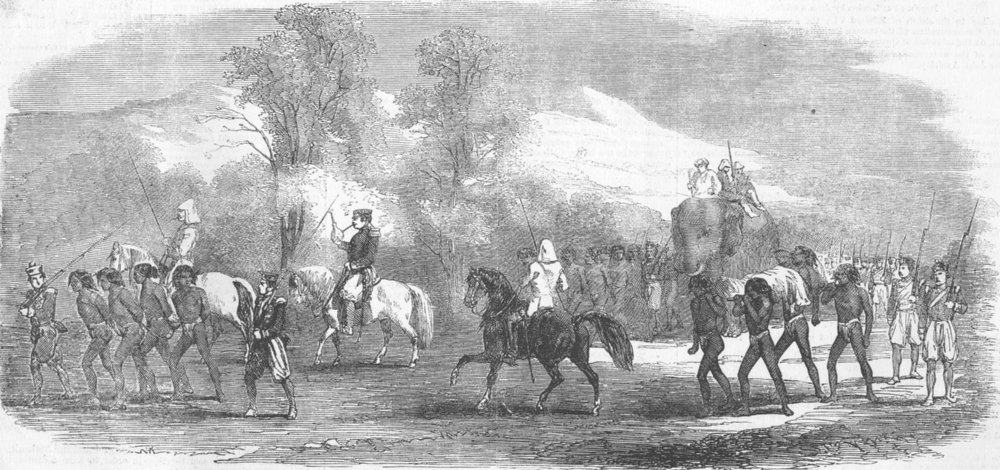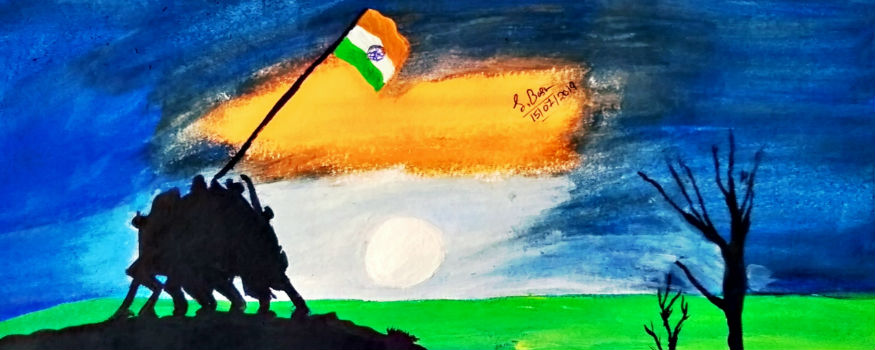– Annoy Sarkar
The oppression by the Zamindars and the British compelled the poor peasants to retaliate. As a result, well before the revolt of 1857, revolutionary movements were witnessed in Bengal. Let’s have a look at them:
The Sanyasi Revolution
The company rule brought with it a general callousness on the part of the Company’s stooges. There were restrictions imposed on pilgrimages and visits to holy places. This outraged the Sanyasis of Bengal, who retaliated by conducting raids on British factories and treasuries. Finally, Warren Hastings contained the movement with the help of military interventions. Perhaps the best depiction of this movement is in Bankim Chandra’s “Anandamath“.
Faraizi movement
In 1820 “Haji Shariyatullah of Faridpur (present-day Bangladesh) started the Faraizi Movement in Bengal against the zamindars and the British rule.
Wahabi Movement
Similarly, “Titu Mir” started the Wahabi Movement in the 24 Parganas of Bengal.
Pagal Panthis
Founded by Karam Shah, the Pagal Panthis was a semi-religious sect originating from the northern districts of Bengal. They took up the cause of the tenants against the Zamindar’s oppression.
Santhal Rebellion
The tribals of Bankura, Birbhum, Medinipur and parts of the Chotanagpur plateau, better known as Santhals, were the original residents of these regions. With the introduction of the Permanent Settlement Policy, the Zamindars started collecting revenues from them.
As a result of the Zamindars’ oppressive acts, they shifted to the jungles of Rajmahal (present Sahebganj, Pakur and Godda districts in our neighbour state, Jharkhand), cleared forests and started agriculture. They named it Damin-i-Koh.
The Zamindars followed suit in search of more revenues, Company officials took away their cattle, outraged the modesty of the ladies and the missionary forced them to Christianity.
In retaliation, the Santhals under the leadership of Sidhu, Kanu, Chand Bhairav, Kalo Pramanick and Domon Majhi waged war against the oppressors in 1855. Commonly known as the “Battle of Bhagnadihi,” They had practically gained freedom in the region until Dalhousie’s soldiers marched with guns and cannons to oust them.

Birth of Patriotism and Social Reforms in Bengal: A step towards the Indian Independence
Listen to Bharat Amar Bharat Barsha by Dr. Ayan Samanta
The impact and influence of British rule in India was way too different from its precursor intruders. Over the years, India had witnessed intrusion from a diverse pool of crusaders starting from the Greeks, Bactrians, Persian, Turks and Arabs. Most of them had settled within India and were absorbed by India’s rich culture and heritage. There also existed an exchange. However, the British conquest came when India depicted a slow and stagnant civilization entangled by superstitions and corrupt religious strongholds. There was nothing that religious ideology could not persuade or convince people to do!
Gradually with the impact of western education, there brewed a general awareness that a vast country like India was colonized by a handful of Europeans merely because of the weakness within the Indian social and cultural structure!
Some anglicized Bengali youths opposed the general thought by evaluating social relevance by rationalism. Akshay Kumar Dutta evaluated the contemporary socio-religious beliefs and practices from a social utility standpoint and replaced faith with rationalism.
Ram Mohan Roy
Born in Radhanagar of Hooghly district, Ram Mohan Roy was the “Erasmus of Modern India”. A master of many languages including Arabic, Persian, Hebrew and Greek, he dreamt of a new India that would emerge from the synthesis of East and West. He opposed evil practices like Kulinism, Caste System and child sacrifice in Gangasagar. He raised his voice for equal rights of inheritance for the females. Eventually, the Regulating Act of 1829 abolished Sati, which was initially applicable in Bengal only!
Young Bengal Movement
The movement took birth at the present day “Presidency college” with Henry Louis Vivian Derozio as the leader and Stalwarts like Peary Chand Mitra and Radhanath Sikdar (calculated the height of Mt. Everest) were the members of the movement.
Ishwar Chandra Vidyasagar
As the Principal of Sanskrit College in Calcutta, he opened the doors for all castes, which was previously reserved only for the Brahmins and Vaidyas. He alone started as many as 35 Girls’ Schools in Bengal. Vidyasagar cited texts from the Vedas to prove that the Hindu religion approved widow remarriage. He also compelled the Brits to pass the Widow Remarriage Act in 1856.
Swami Vivekananda
Vivekananda argued that the same investigation methodology should form the basis of any religion or practice to justify itself as it’s for Science. With a burning sense of patriotism, he wanted to infuse courage and confidence through education and spirituality. He never gave any political speeches, but he infused a sense of pride in India’s past and a golden sense of confidence in India’s future. Militant Nationalism in India largely owed to his spirited speeches and writings.
Trivia: The founder of GD Pharmaceuticals (one of the Swadeshi establishments), Gourmohan Dutta, announced free distribution of Boroline antiseptic ointment tubes to all on 15th August 1947 to celebrate Indian Independence. Read about the journey of Boroline here.
Featured Image: Souptima Basu
Video Courtesy: Tannistha Mukherjee
Audio Courtesy: Ayan Samanta
About Annoy Sarkar
Annoy Sarkar, a pure Bangali from his heart and with a dire fascination for good food is genuinely in love with Bengal and its culture.
He works with CG and is a caring father of an active toddler. During his free time, he enjoys reading, binge-watching, and helping society in his small ways.
Disclaimer: The opinions expressed in this post are the personal views of the author. They do not necessarily reflect the views of KolkataFusion. Any omissions or errors are the author’s and KolkataFusion does not assume any liability or responsibility for them.


Verry nice presentation …..
Thank you so much! Please stay tuned for the third part.